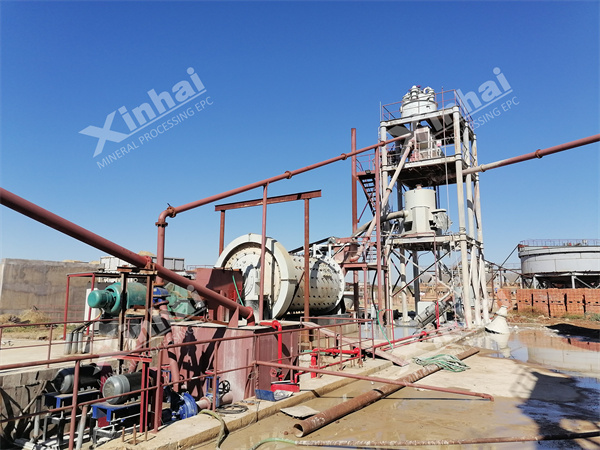If you want to know more information (such as product/process price, etc.), please contact us 24-hour telephone
Driven by the global carbon neutrality goal and resource intensive development, the sustainable design of copper ore dressing plants has become a core indicator of industry competitiveness. From the professional perspective of EPC engineering general contractors, this article deeply analyzes how to build an environmentally friendly, economically efficient and socially recognized modern dressing plant through innovative technology integration and systematic planning.
1. More crushing and less grinding process optimization
The combination of high-pressure roller mill and semi-autogenous mill is used to reduce the particle size of the crushed product by 30%-40%, and the energy consumption per ton of ore is saved by 15-22% compared with the traditional process. A Chilean copper mine project has saved 18 million kWh of electricity annually through the transformation of the stepped crushing system.
2. Intelligent sorting technology matrix
• XRT intelligent sorting equipment: pre-selection waste rock rate increased to 45%, and the selected grade increased by 1.8 times
• Superconducting magnetic separator: weak magnetic mineral recovery rate exceeded the 92% technical threshold
• Microbubble flotation column: copper concentrate grade is stable at more than 28%, and reagent consumption is reduced by 40%
3. Tailings resource closed-loop system
The dry discharge process of deep cone thickener + ceramic filter is applied to achieve a tailings moisture content of ≤15%. A demonstration project in Yunnan prepares ceramic raw materials from tailings, creating an annual added value of 32 million yuan.

1. Energy management system (EMS)
Integrated equipment energy efficiency monitoring, photovoltaic power generation prediction, load dynamic allocation and other functional modules, the actual measured data of a new concentrator showed that the system power saving rate reached 12.3%.
2. Clean energy alternative path
• Photovoltaic corridor: photovoltaic modules are laid on the top of the belt corridor of the crushing station to meet the power demand of the auxiliary system
• Biomass fuel: 30% agricultural and forestry waste is mixed in the drying process to reduce CO₂ emissions by 28,000 tons per year
• Waste heat recovery network: heat energy is recovered from mill bearings, air compressor units and other links to supply heating in the factory area
1. Process reengineering strategy
Through JKSimMet simulation optimization, the investment in the mill-floatation equipment of a 20,000t/d concentrator was reduced by 18%, and the annual operating cost was saved by 7.6 million yuan.
2. Precision control system for reagents
The combination of online XRF analyzer + automatic dosing machine reduces the unit consumption of collector from 120g/t to 85g/t, saving more than 4 million yuan in reagent costs per year.
3. Equipment life cycle management
Using the predictive maintenance mode of vibration analysis + oil detection, the failure rate of key equipment has dropped by 60%, and the annual production of copper concentrate has increased by 1,500 tons.
1. Water resource community feedback system
Build a graded water treatment center to use the treated mineral processing water for irrigation of surrounding farmland. The annual water supply of a project in Peru reaches 450,000 m³.
2. Skill revitalization plan
Co-build a training base with vocational colleges to cultivate scarce jobs such as mineral processing machinery operation and automatic control. The training pass rate is 92%, and the proportion of local employees has increased to 78%.
1. Digital twin platform
Build a three-dimensional visualization system with 30,000+ monitoring points to achieve real-time early warning of equipment health, energy consumption intensity, and recovery rate fluctuations.
2. Application of AI optimization algorithm
• Grinding particle size prediction model: accuracy > 85%, stable concentrate quality
• Flotation foam image analysis: real-time adjustment of aeration volume, copper recovery rate increased by 1.2 percentage points
Sustainable design is not a cost burden, but a strategic choice for value creation. By adopting modular design, intelligent control systems and clean production technologies, modern copper ore dressing plants can fully recover environmental protection investment within 3-5 years and obtain a continuous income period of 10-15 years. Our EPC team has formed a solution package containing multiple patented technologies, which can tailor a beneficiation system with both environmental benefits and economic returns for customers based on factors such as ore deposit characteristics and market positioning.